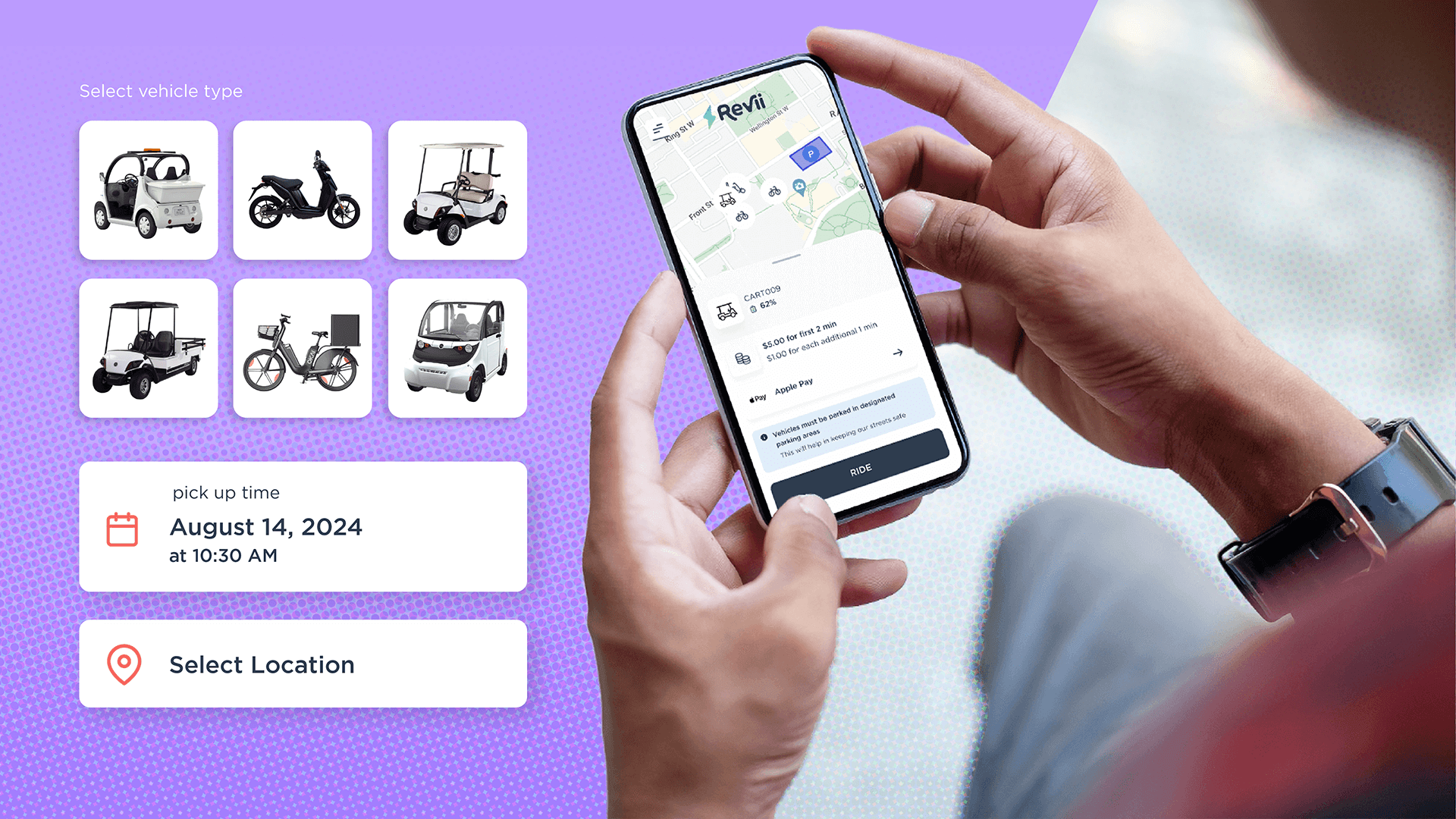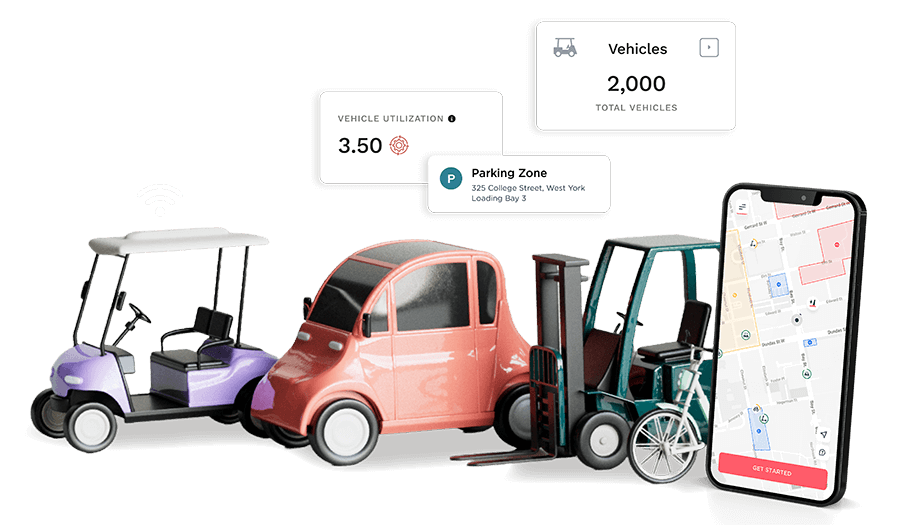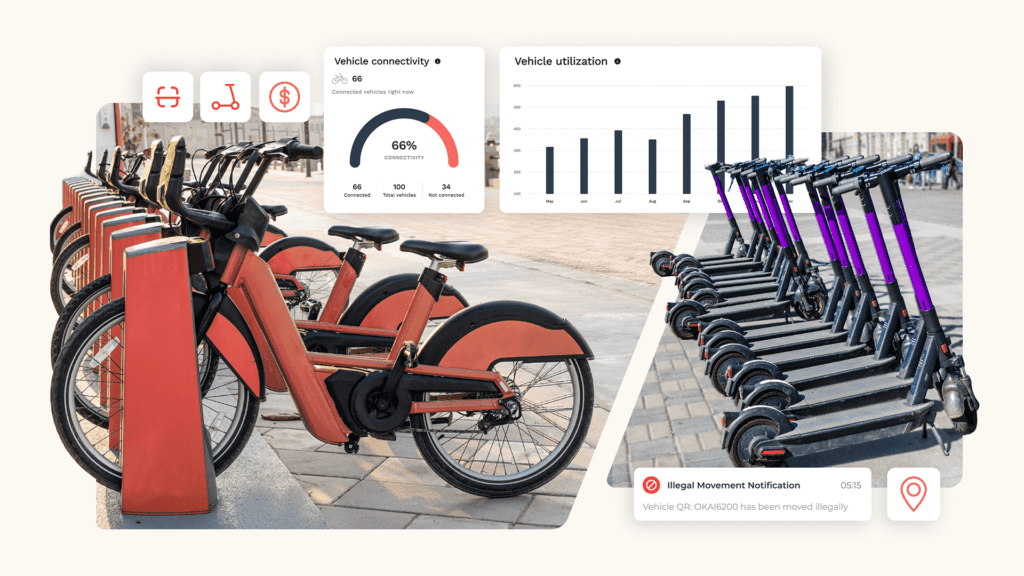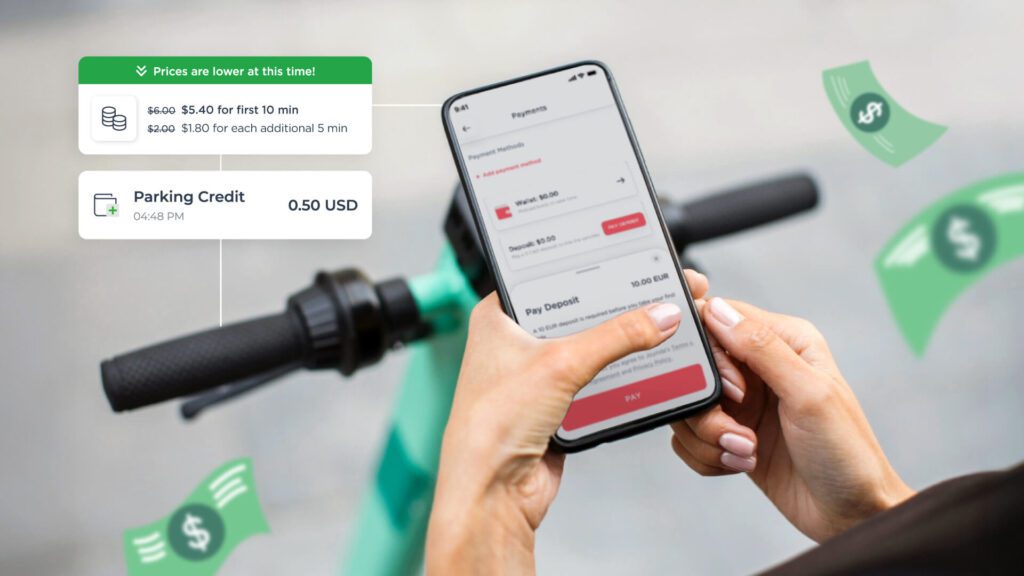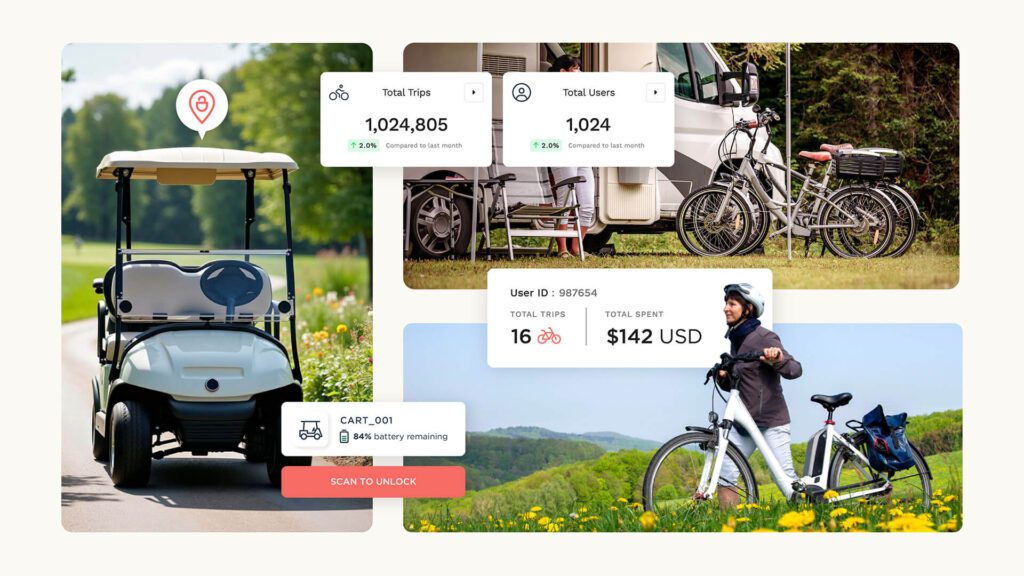The subscription economy, marked by a shift from ownership to on-demand access, is reshaping industries worldwide. Mobility is no exception–demonstrated by a key trend gaining traction among automakers, bike shop owners and every mobility business in between: Vehicle as a Service (VaaS).
What is ‘Vehicle as a Service?’
Unlike traditional ownership or fixed leases, Vehicle as a Service business models give users the option to access vehicles as needed without the long-term commitment of buying or leasing. Imagine driving a Porsche for the weekend, then swapping it on Monday for a Nissan. Car subscription services, like those offered by Hertz and Sixt, enable consumers to do just that.
Vehicle as a Service in the car industry
Recognizing the consumer demand for flexibility and convenience, several luxury automobile brands have begun to embrace the VaaS model, appealing to younger generations eager for ‘the next great thing.’ Subscribers pay a monthly fee to access a variety of vehicles–usually with inclusive services, such as insurance, maintenance and roadside assistance.
Some services even let users swap cars based on their needs or preferences, providing the freedom to drive different models under the same plan.
Mass-market auto brands and Original Equipment Manufacturers (OEMs) of smaller form factors have followed suit; including golf carts, cargo trikes, ATVs and mobility scooters. Where once the only option was to purchase or lease a vehicle, nowadays renting a low-speed vehicle (LSV) like a GEM is as easy as scanning a QR code to pay, unlock and drive.
How does VaaS work?
Similar to a monthly subscription fee for streaming movies and music, VaaS businesses leverage digital platforms for booking, payment and fleet management. Here’s how it works:
- Booking: Customers use a mobile app or website to browse available vehicles, select their preferred model and book it for a specified period. The digital platform provides real-time availability, allowing for instant reservations without the need for human intervention.
- Payment: Payments are processed through the digital platform, with options ranging from time- or usage-based pricing, to one-time rentals and ongoing subscriptions. This seamless and paperless payment process simplifies transactions for both the customer and the service provider.
- Fleet Management: Advanced fleet management software tracks vehicle usage, maintenance needs and location in real-time. This ensures optimal utilization of the fleet, reducing downtime and maximizing revenue for the service provider.
- Unlocking and Access: Once the booking is confirmed and payment is made, customers can unlock the vehicle using their smartphone. QR codes or Bluetooth technology often facilitate this process, allowing for contactless and convenient access.
Benefits of Vehicle as a Service
It’s clear how flexible vehicle access meets a certain consumer demand, but is similar value realized on the supply side?
According to some estimates, OEMs and distributors that embrace subscription models could see a 40 to 50% direct profit increase as compared to a one-time sales cycle.
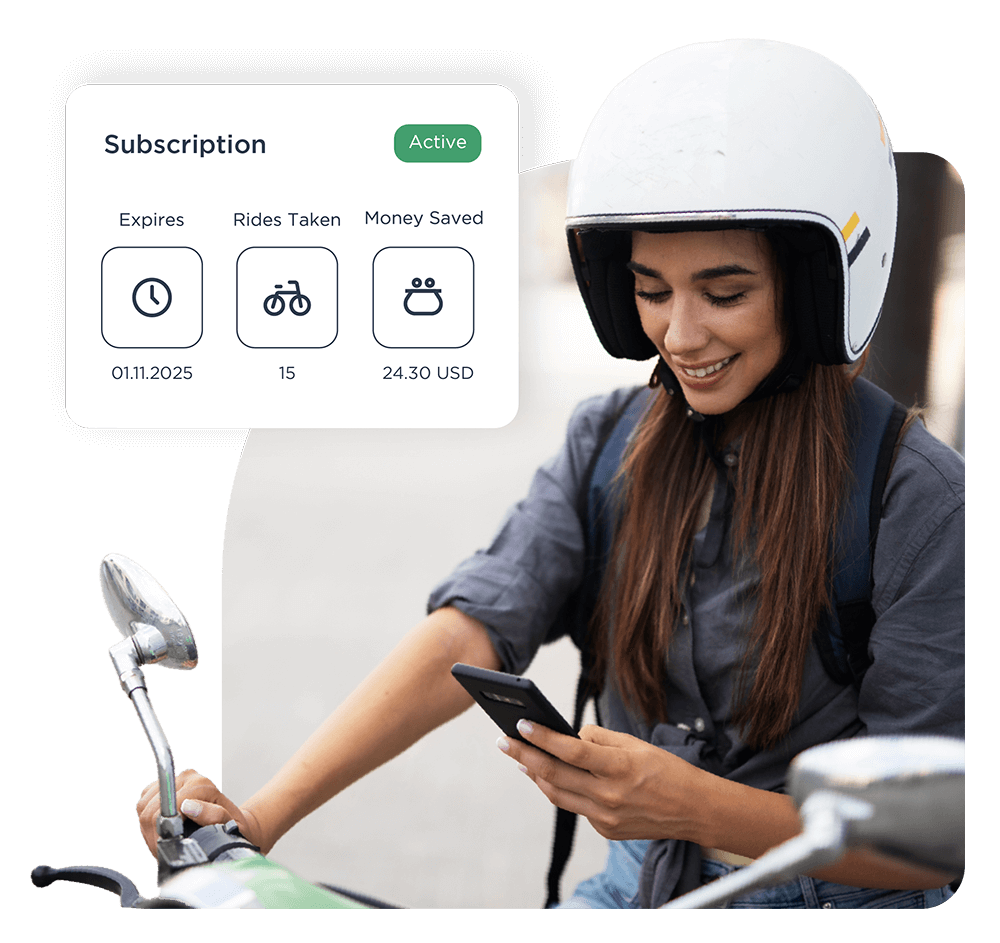
Here’s just a few of the potential perks:
Greater customer lifetime value
Service-based businesses foster ongoing relationships, potentially extracting more value from each customer over time. Vehicle access can also be bundled with related products and services such as insurance, maintenance or promotional tie-ins with local businesses–all of which increase customer retention.
Enhanced profitability
Vehicles with tracking and smart connectivity collect a wealth of data across all stages of the vehicle lifecycle. The opportunities are endless for how fleet operators might use these insights to tailor service offerings to individual customers, campuses and corporate fleet clients.
Revenue diversification
The Vehicle as a Service model offers significant opportunities for flexibility, customer retention and revenue generation. However, it’s not meant to replace fixed leases or one-time purchases. Instead, VaaS serves as a complementary offering that enhances traditional models.
For instance, a golf cart distributor’s core business might involve selling carts to golf courses and property managers. Simultaneously, they can operate a usage-based service for properties needing vehicles for their staff.
This dual approach ensures a more resilient income stream during off-peak sales seasons or economic slowdowns.
Benefits of VaaS for vehicle OEMS
For vehicle makers and distributors that see an opportunity in VaaS, but aren’t keen to manage day-to-day operations of a subscription business, partnering with fleet operators and distributors is a win-win solution.
Integrating the IoT solutions of a provider like Joyride enables OEMs to maintain focus on their core competencies, while at the same time providing an innovative solution to distributors and fleet owners.
Putting vehicles into shared-use scenarios also helps OEMs to realize greater value on the investments made in advanced sensors and connected vehicle technologies. This is because the utilization of shared vehicles far surpasses the average use of a private vehicle.
While today the impact of not offering VaaS may cause a minor loss of market share, in the near future, it could mean missing out on an entire customer segment that prioritizes flexibility and convenience.
Should your business offer Vehicle as a Service?
With an impressive projected market size and the myriad benefits of VaaS presenting real world results, now is the time for vehicle makers to embrace this model and future-proof their offerings. But why wait to develop an in-house solution when you could launch a vehicle sharing system today?
Joyride’s custom software platform provides a faster, cost-effective way to enter the market with an already proven product. We’ve helped numerous vehicle makers, like GEM, accelerate their go-to-market strategy to offer connected vehicle solutions almost immediately.
Power a VaaS business with Joyride
Ready to reach a whole new market segment that prefers vehicle access over ownership? Joyride’s plug-and-play platform comes ready with feature-rich solutions to complement your current distribution and operating model with vehicle as a service.
Contact our team to learn more.

